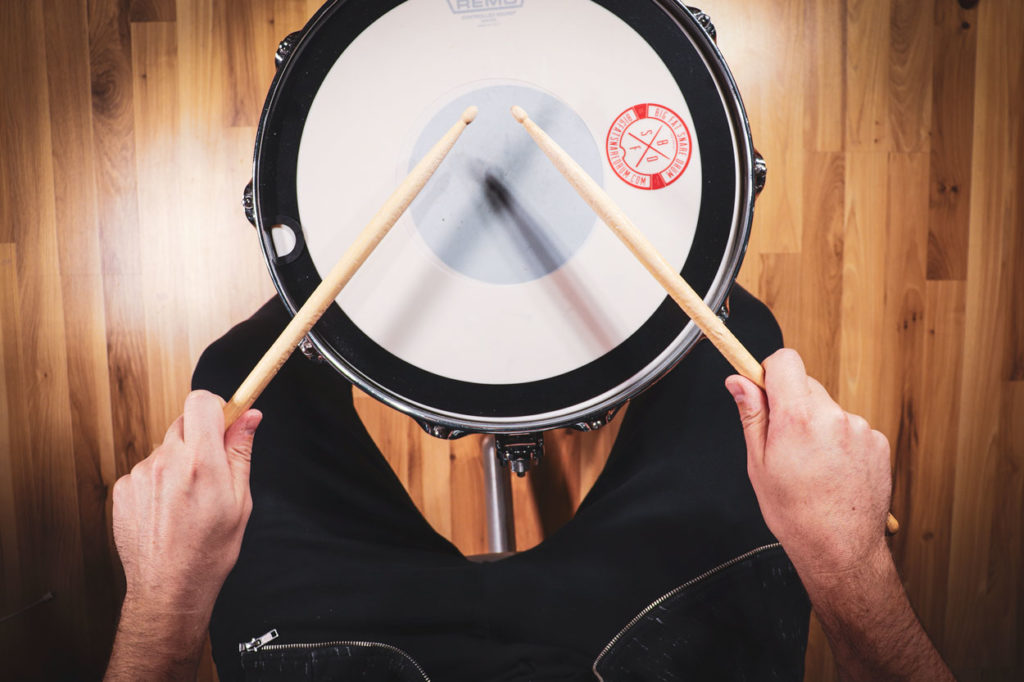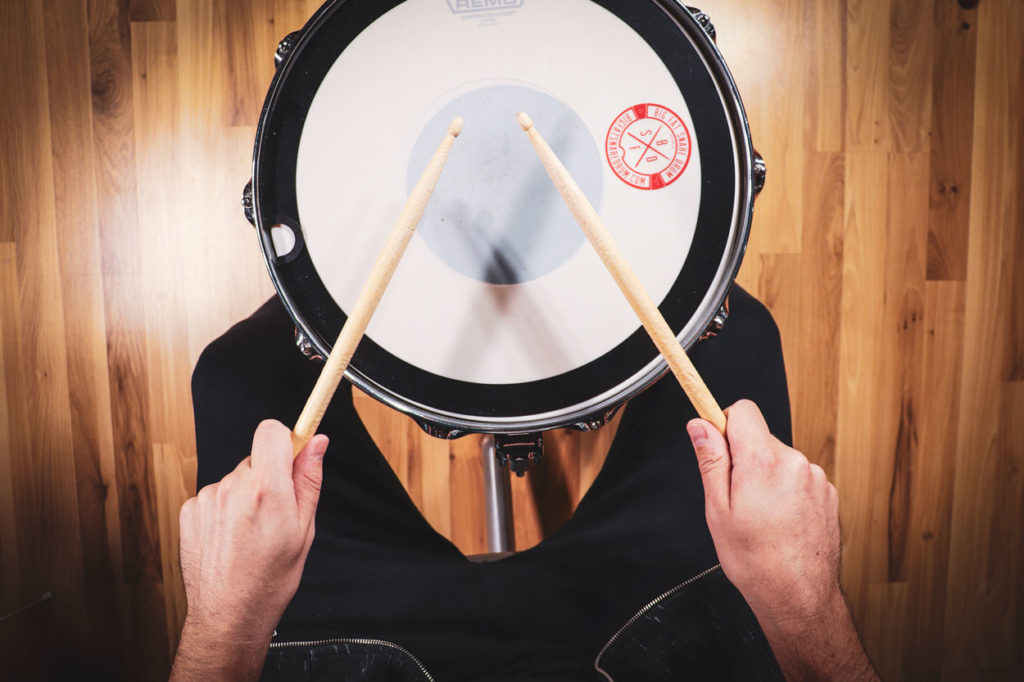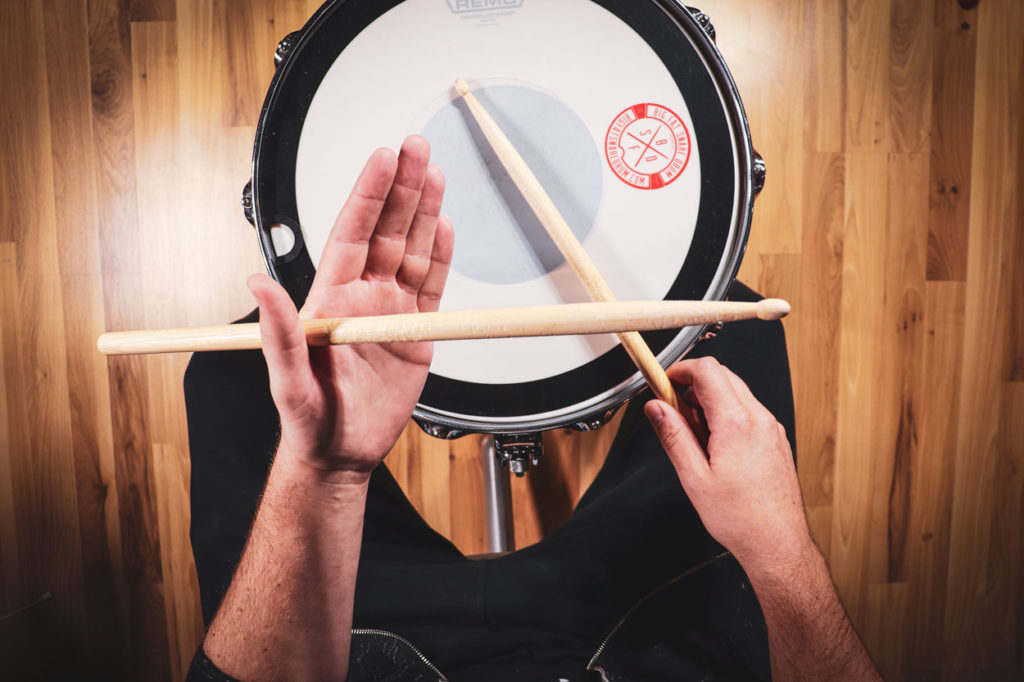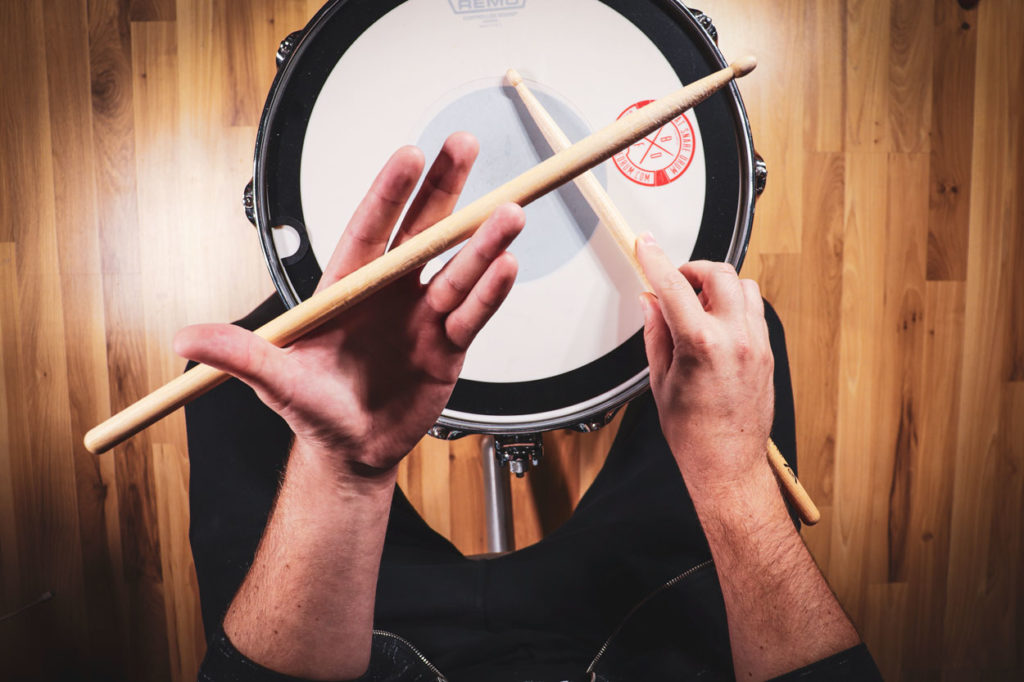
We may earn a commission from the affiliate links on this site. Learn more›
As a new drummer, learning how to hold your drumsticks properly is essential. Failure to undergo this process will lead to poor technique, bad habits, and slower learning.
Playing with proper grip allows you to play with more control and efficiency, achieving maximum rebound as well. The longer you put off learning how to hold the sticks, the longer it will take to grow as a drummer.
There are two primary types of grips drummers use today — matched and traditional.
Matched Grip
Matched Grip is a straightforward way to hold your drum sticks. It’s by far the most common grip used by drummers.
To describe, Matched Grip involves both hands matching each other. The sticks rest on the fingers and are either moved with the wrists or the fingers. There are three variations of the grip as described below.
German Grip

The German, or Germanian, Grip is very common with many of today’s drummers.
Hold your stick at the balance point (fulcrum) with your index finger and thumb. Place your other fingers on the bottom of the stick.
German Grip is rather strict, in that, when looking top-down at your sticks, you must form a 90-degree angle with the sticks.
As a result, your elbows tend to stick out or chicken wing as we used to call it at university (completely normal).
American Grip

I’d like to believe that the American Grip is more popular than German, but I can’t say for sure. The American Grip is identical to the Germanian Grip, except it’s far more relaxed.
Instead of making that tight 90-degree angle, you can relax and play in a more comfortable position. American Grip is what I like to play the most.
French Grip

The outlier of the three grips is French. It’s far different to both American and German grip. With French, turn your palms upward and ensure that your thumbs point up to the sky. You’ll notice that your sticks are close to being parallel.
French Grip utilizes the fingers primarily and far less use of the wrist. Timpani players in orchestras commonly play French Grip, though not exclusively. Sonny Emory, formerly of Earth, Wind, and Fire uses French Grip on the kit.
Traditional Grip

With Traditional Grip, one stick adheres to Matched Grip above, while the other holds the stick radically different. In my case, the left-hand holds the stick traditionally.
Take your stick and place it between your thumb and index finger. Bend your ring finger and pinky down and lay the stick between your middle finger and ring finger.
Your stick will rest between these two fingers, right on the sides of your nails. Take a few strokes on a practice pad. It probably feels slightly strange at first.
Traditional is far more challenging to grasp as a new drummer, so don’t worry if you don’t get it right away.
Traditional Grip is pervasive in jazz drumming and marching drums, but there are a few drummers who use it in rock music surprisingly.
Wrapping Up
There is no correct or one way to hold the drum sticks properly. The best way forward is to try all of the grips and see which one feels most comfortable to you and learn with that.
Do I Need To Pick Just One?
No. That’s the beauty of it. All three Matched Grip variations have their advantages. The best practice is to learn them all and apply them to different situations when needed.
French Grip, for example, can be excellent when playing delicately in quiet situations. German Grip is a powerhouse in sections that require hard hits and energy.
After you have a solid drumming foundation, feel free to revisit the different grips, and try to learn them all. You’ll be surprised at how you can apply them to different situations.
Another thing — relax. Don’t hold your sticks with a vengeance. Playing with rigidity will exhaust and frustrate you. Relaxing not only helps your mind understand what your playing, but you’ll also sound better too.
Don’t sleep on the importance of learning the different grips. Also, an excellent way to test which grip you like best is to check them with your drum rudiment routines.





